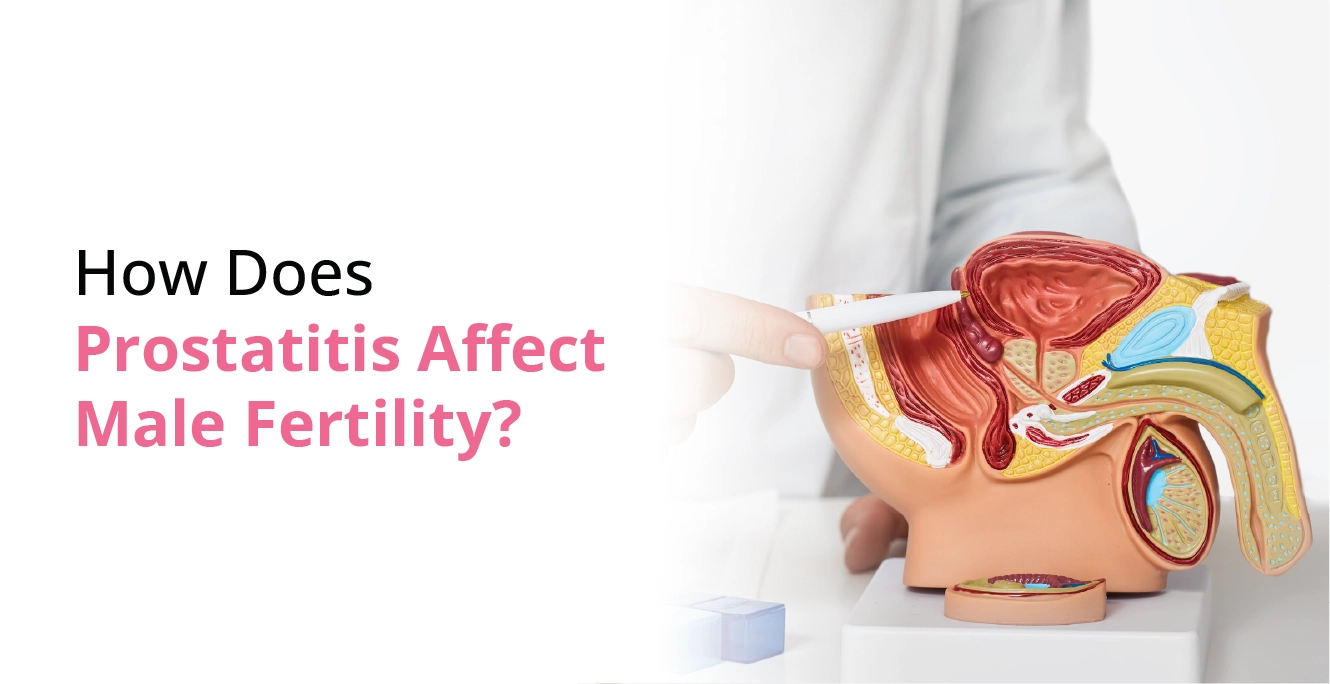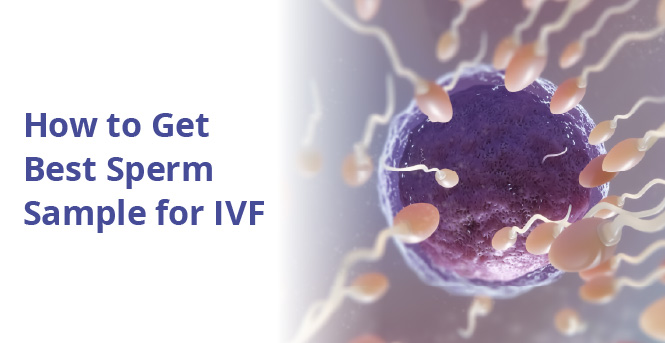
The Role of Sperm Motility in Male Fertility

Table of Contents
- The Connection Between Motility of Sperm and Fertility
- Factors Affecting Motility of Sperm
- Major Causes That Result in Poor Motility of Sperm
- Diagnosis to Asses Motility of Sperm
- Treatment Options to Improve Sperm Motility Percentage for Pregnancy
- Lifestyle Adjustments During ARTs
- What should be the sperm motility percentage for pregnancy?
- How to Improve Motility of Sperm
- Conclusion
- Frequently Asked Questions (FAQs)
Sperm motility is a crucial component of male fertility and is essential to the process of fertilisation. We explore the complexities of sperm motility, its importance in the context of fertility, factors that affect it, and strategies for resolving potential problems in this extensive guide.
- Understanding Sperm Motility:
The term “sperm motility” describes a cell’s capacity for efficient movement. Sperm must migrate in a progressive and coordinated manner in order to reach the egg and fertilise it.
- Types of Sperm Motility :
Three different types of Sperm motility include immotility, non-progressive motility, and progressive motility. Every variety has a unique function throughout the process of fertilisation.
The Connection Between Motility of Sperm and Fertility
Key Role in Fertilisation
One essential component of fertilisation is sperm motility. Sperm must move with strength and agility in order to pass from the cervix to the fallopian tubes and penetrate the egg.
Relationship with Sperm Count
Sperm motility is important, but it functions in concert with sperm count. The likelihood of successful fertilisation is increased when there is a sufficient number of sperm and they are motile.
Factors Affecting Motility of Sperm
- Environmental and lifestyle factors:
Sperm motility can be impacted by outside variables such as nutrition, activity, and exposure to toxins. Living a healthy lifestyle can have a beneficial effect on sperm motility.
- Hormones Balance:
Unbalanced hormone levels, particularly those pertaining to testosterone, might impact sperm motility. To maximise fertility, hormonal issues must be recognised and addressed.
- Sensitivity to Temperature:
Temperature variations can affect sperm. Motility can be adversely affected by elevated scrotal temperature, which is frequently associated with tight clothes or heated conditions.
Major Causes That Result in Poor Motility of Sperm
Poor motility of sperm can be caused by several things, which can impact the sperm’s ability to migrate efficiently and reach the egg for fertilisation. These are a few main reasons:
- Varicocele: This is a condition in which the veins draining the testicles enlarge. It may cause the testicles to warm, which would impair sperm motility.
- Hormonal Imbalance: Variations in the levels of hormones, particularly testosterone, can impact the motility and generation of sperm.
- Genetic Factors: Some genetic disorders might cause sperm to have structural or functional abnormalities that affect their motility.
- Infections: Sexually transmitted infections (STIs) and epididymitis are examples of infections that can decrease sperm motility and induce inflammation in the reproductive system.
- Testicular Overheating: Sperm motility can be hampered by extended exposure to high temperatures, which can happen via regular hot baths, saunas, or wearing tight clothing.
- Lifestyle Factors: sperm motility percentage for pregnancy can result in poor because of unhealthy lifestyle choices such as smoking, drug use, excessive alcohol use, and poor food.
- Obesity: Reduced sperm motility has been associated with obesity. Reproductive health depends on maintaining a healthy weight through a balanced diet and regular exercise.
- Certain Medication: A number of pharmaceuticals, including anti-androgens, chemotherapy, and some antibiotics, can have a deleterious effect on sperm motility.
- Environmental Toxins: Pesticides, heavy metals, pollution, and environmental toxins can all negatively impact the motility of sperm.
- Idiopathic Infertility: Idiopathic infertility is the term used to describe situations in which the precise reason for low sperm motility cannot be determined.
- Radiation and Chemotherapy: Radiation and chemotherapy are two cancer treatments that might harm sperm motility and production.
- Underlying health conditions: Poor sperm motility can be caused by medical illnesses such as diabetes, thyroid issues, and autoimmune diseases.
- Structural Abnormalities: The natural migration of sperm might be impeded by congenital or acquired structural abnormalities in the reproductive organs.
Diagnosis to Asses Motility of Sperm
The fertility expert recommends a thorough diagnosis to detect the root cause of the condition to determine the right and effective technique for the treatment. To assess the motility of sperm the expert will suggest the following diagnostics:
- Semen Analysis: One essential diagnostic technique for determining sperm motility is a semen analysis. It offers information on the proportion and calibre of motile sperm.
- Advanced Testing Methods: Technological developments like computer-assisted sperm analysis (CASA) allow for more accurate and thorough evaluations of sperm motility.
Treatment Options to Improve Sperm Motility Percentage for Pregnancy
Male infertility may be significantly influenced by low sperm motility. Thankfully, sperm motility can be increased with a variety of treatment choices, from advanced assisted reproductive technologies (ART) to lifestyle modifications. Here are a few methods:
Lifestyle Modifications:
- Nutrition and Diet: Promote a well-balanced diet high in vitamins, minerals, and antioxidants. Certain nutrients, such as omega-3 fatty acids and zinc, are linked to increased sperm motility.
- Drinking plenty of water: Make sure you’re drinking enough water because dehydration might affect sperm motility. Proper fluid balance must be maintained for the best possible sperm function.
- Exercise: Regular, moderate exercise has a good impact on reproductive and general health. But stay away from overdoing it or working out too hard because those things can backfire.
- Handling Stress: Reproductive function can be affected by ongoing stress. To enhance sperm motility, include stress-relieving exercises like yoga, meditation, or mindfulness.
Medical Interventions:
- Hormone Therapy: Enhancing sperm motility may be possible by using hormone therapy to treat hormonal abnormalities, particularly low testosterone levels. One popular method is testosterone replacement therapy.
- Medication: To increase sperm motility and enhance sperm production, doctors may prescribe drugs like letrozole or clomiphene citrate.
- Antibiotics: If infections are found to be the reason, treating the illness with the right antibiotics can reduce inflammation and increase sperm motility.
Surgical Interventions:
- Varicocele repair: By lessening testicular warming, varicocele repair surgery attempts to treat the enlargement of the veins in the testicles, which may enhance sperm motility.
- Sperm Retrieval Procedures: Surgical sperm retrieval methods like testicular sperm extraction (TESE) or microsurgical epididymal sperm aspiration (MESA) may be taken into consideration in cases of obstructive azoospermia or low sperm motility.
Assisted Reproduction Technologies (ART):
- Intrauterine Insemination (IUI): IUI increases the likelihood that sperm will reach the egg by injecting prepared sperm straight into the uterus, avoiding any potential obstacles.
- In vitro fertilisation (IVF): IVF is an enhanced artificial reproductive technology in which sperm and eggs are mixed in a lab and the resulting embryos are inserted into the uterus. This is especially useful when there are serious problems with sperm motility.
- Injecting Sperm Intracytoplasmically (ICSI): ICSI entails directly inserting one sperm into each egg. In situations where sperm motility issues are severe, this approach is very successful.
Lifestyle Adjustments During ARTs
- Health Before Conception: Prior to and throughout reproductive treatments, both partners should strive for optimal health. This entails controlling stress, upholding a healthy lifestyle, and abstaining from dangerous drugs.
- Supplemental Nutrition: During fertility treatments, a healthy diet—including the use of supplements if needed—can support the general health of the reproductive system.
What should be the sperm motility percentage for pregnancy?
According to the World Health Organisation (WHO), a semen sample is considered to have normal sperm motility if at least 40% of the sperm show progressive motility or if at least 32% show total motility (which includes both progressive and non-progressive motility). These parameters are among the standards by which male fertility is evaluated in a typical semen analysis.
While sperm motility is a critical component of fertility, semen quality encompasses more than simply this. To provide a complete picture of male fertility, additional variables such as sperm count, morphology (the shape of the sperm), and total amount of semen are considered.
It is recommended that both partners have a complete reproductive evaluation—including a semen study for the male partner—if they are having trouble conceiving. In addition, consulting a fertility expert timely can improve sperm motility percentage for pregnancy effectively.
How to Improve Motility of Sperm
Following are a few tips that can help you improve sperm motility and its percentage for healthy pregnancy:
- Consume a healthy, well-balanced diet high in minerals, vitamins, and antioxidants. Sperm motility can be positively impacted by regular exercise, abstaining from tobacco and alcohol, and managing weight.
- Maintaining adequate hydration is important for sperm function in general. Improving sperm motility requires consuming enough water to prevent dehydration.
- Reproductive health might be impacted by ongoing stress. To support sperm motility, practise stress-reduction methods like yoga, meditation, or deep breathing.
- Sperm motility can be negatively impacted by extended exposure to high temperatures, such as those seen in saunas, hot baths, or tight clothes. Choose colder settings to encourage sperm motility.
- Reduced sperm motility has been associated with obesity. Fertility can be positively impacted by reaching and maintaining a healthy weight through appropriate nutrition and activity.
- Omega-3 fatty acid-rich foods like walnuts, flaxseeds, and fatty fish may improve sperm motility. Think about including these in your diet.
- Sperm motility may be impacted by oxidative stress, which antioxidants assist in preventing. Add high-antioxidant fruits, veggies, and nuts to your daily meals.
- Reduce your exposure to pollution, pesticides, and environmental chemicals that could impair sperm motility. Keep an eye on your environment and adopt lifestyle decisions that minimise exposure.
- Regularly partake in modest physical activity to support reproductive and general wellness. Steer clear of rigorous and prolonged exercise regimens since they may negatively impact sperm motility.
- Speak with a medical expert about the possible advantages of taking supplements like L-carnitine, zinc, and coenzyme Q10, which have been linked to increased sperm motility.
Conclusion
Understanding male fertility requires an understanding of sperm motility. This article offers an all-encompassing perspective on sperm motility and its importance, covering everything from its basic function in fertilisation to the numerous factors affecting it. The path towards optimising male fertility starts with a comprehensive understanding of the impact of sperm motility on the process of conception, whether addressing obstacles or investigating natural approaches to boost motility. It’s important to speak with a healthcare professional before beginning any supplements or making big changes to your lifestyle. Since every person’s situation is different, a tailored strategy guarantees the safest and most efficient methods of boosting sperm motility. A variety of strategies, from dietary changes to sophisticated assisted reproductive technology, are used to increase sperm motility. The precise underlying causes of low sperm motility will determine which course of action is best. A comprehensive assessment by a medical practitioner or an infertility specialist is essential to ascertain the best and most efficient plan of action customised to each person’s particular situation. If you are diagnosed with poor sperm motility and seeking effective treatment options consult our fertility expert today, you can either give us a call directly at the number above or schedule an appointment by completing the given form. Our coordinator will get in touch with you soon to discuss your needs and set you up with the most qualified fertility specialist at Birla Fertility & IVF.
Frequently Asked Questions (FAQs)
- How to improve the motility of sperm naturally?
One can always start with nutrition support like certain foods have been associated with enhanced sperm motility, including omega-3 fatty acids and antioxidants. Including them in the diet can provide organic assistance. Include sufficient hydration because sustaining good sperm activity requires proper hydration. Sperm motility can be adversely affected by dehydration, which highlights the significance of maintaining adequate hydration.
- What is the normal range of sperm motility?
40% or more than that is typically considered a normal range of sperm motility to reach and fertilize an egg.
- Can home remedies improve the motility of sperm?
There is no significant research that states that home remedies can improve sperm motility. Therefore, it is always advisable for individuals if they are diagnosed with low sperm motility, to get the treatment timely to avoid any fertility and conception related issues.
Our Fertility Specialists
Related Blogs
To know more
Birla Fertility & IVF aims at transforming the future of fertility globally, through outstanding clinical outcomes, research, innovation and compassionate care.
Had an IVF Failure?
Talk to our fertility experts

 Our Centers
Our Centers









